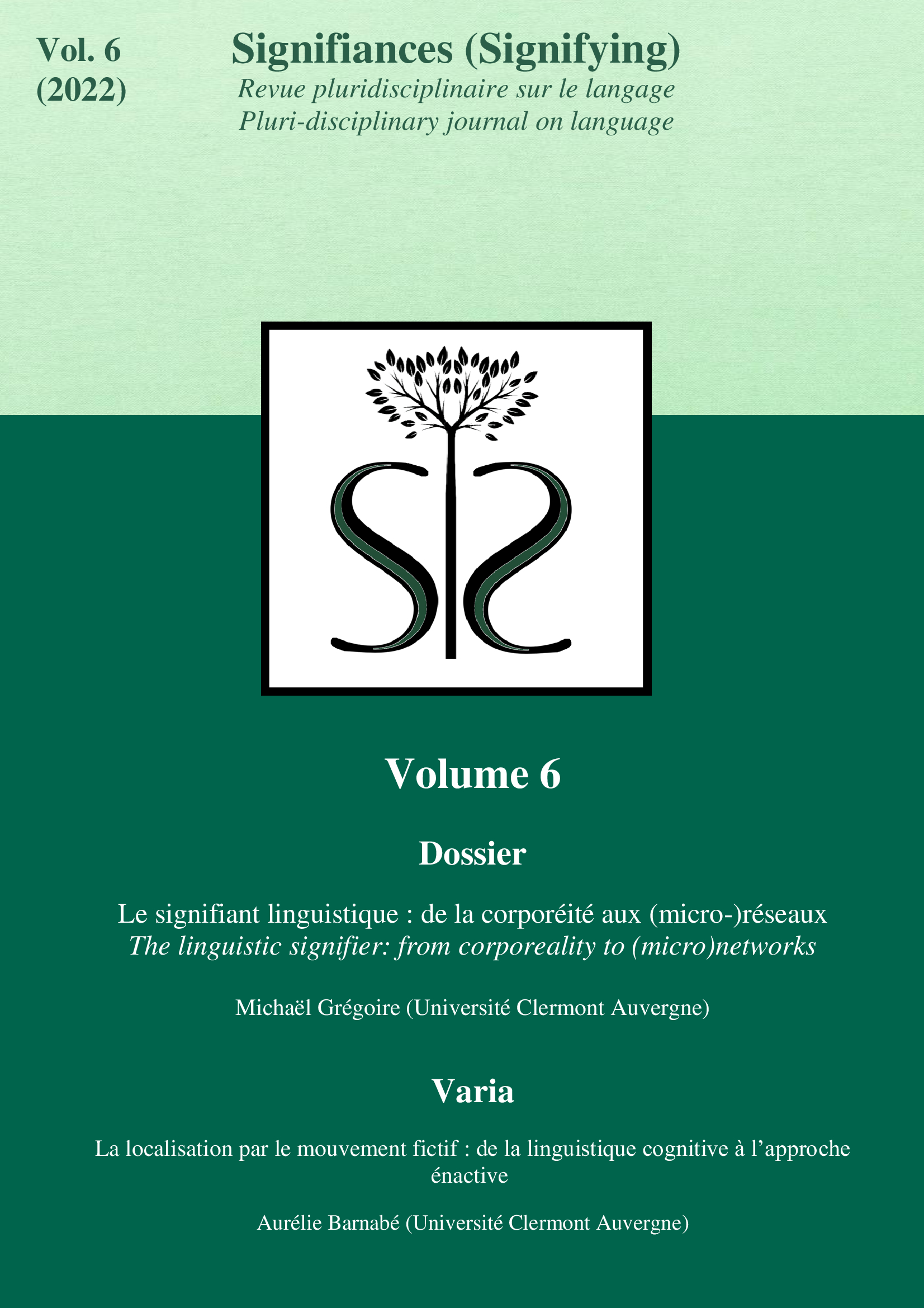Localization through fictive motion: From cognitive linguistics to the enactive approach.
DOI:
https://doi.org/10.52497/signifiances.v6i1.335Abstract
The linguistic realization of the path has been investigated through several studies (Talmy, 2000a; Dan I. Slobin, 1996a, 2003, 2004). The present analysis examines the linguistic structuring of a path, that we call the “localization path”. It represents a trajectory achieved through the fictive motion of an entity along this path to reveal its localization in a spatial area. This linguistic path is inspected though 110 English occurrences (e.g. The road rose through a valley), which are exclusively composed of the verbs “fall” and “rise”. In the first part, the conceptual and semantic stability of the localization path will be dealt with. Then, it will be shown whether the semantic, regular basis of the “localization path” is echoed through recurrent syntactic patterns. In a second part, a typology of the syntactic constructions of the path examined will display its main constructional patterns. If the semantic and the syntactic schemas of the path inspected have actually been identified by cognitive linguistic works of research, our goal consists in complementing the exploration of this construction through an additional theory, namely the enactive approach. In the third part, the lexical and aspectual loads of “fall” and “rise” will be examined through the enactive paradigm to highlight the way the enactive viewpoint completes the cognitive studies so far achieved on the localization path.


